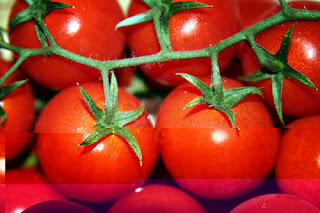Some of these handy Bearded Dragon facts could help you make sure your new Beardie has a long and healthy life. If you're already an old hat at keeping these pet lizards, there are a few tips you can glean from the facts to give your pet a life of contentment. Go through the checklist and make sure you have these suggestions covered. Since home is where the heart is, let's start with your lizard's home.
What makes the best home for a Beardie? There are different types of homes for a pet Beardie but the one that's best for yours is the one he thrives in. An enclosure that's too small is not good, especially for an adult Beardie no matter how much money you spend on it or how nicely you take care of the inside of it.
Don't make the mistake of buying your Beardie's home based on his juvenile size. Just ask teens outgrow bedrooms with cute little kid themes, so do reptiles outgrow their once suitable area.
Within this place for him to call home, you're going to have to place a way to keep an eye on how warm or cold his surroundings get. Beardies cannot handle wild swings in temperatures and you don't want to wait until you notice he's acting sick before you realize there's a problem.
These Bearded Dragon facts [http://beardeddragontips.blogspot.com/] can help you try to stay on top of situations in the enclosure before they affect your Beardie. Make sure your lizard has a way to perch near the warm side of the tank. If you notice pictures of Beardies in the wild, you'll see them sitting in the sun on rocks.
This isn't so they can work on a tan but rather because they use the warmth of the sun to help regulate their inner temperature. That's also why they need a cool side to the tank. When they get too warm, they know instinctively to seek shade. You can replicate the warmth for him by using a light source but for the cooling off part, you'll need to give him a shelter in the cage.
Since Beardies are healthy eaters, many new owners make the mistake of thinking they can eat anything or any type of insect. They mistakenly feed their pet insects like hard shelled beetles that can lodge in the Beardie's digest tract and cause not only discomfort but health issues requiring the services of a veterinarian.
Even though not all of them are poisonous, spiders also are not good for a Beardie. It can be too difficult to tell which ones will cause him to become ill and which ones won't, so it's best to avoid them all. Give your Beardie a choice of vegetables-avoid certain parts of the plant like the tomato vines and stems-and also give your Beardie a selection of fruits but without the seeds.
Learn as much as you can about how to make your exotic pet thrive from sites like http://www.bearded-dragon-setup.info/ because knowing the right Bearded Dragon facts can help you give the kind of care in captivity that your Beardie would get in the wild.
What makes the best home for a Beardie? There are different types of homes for a pet Beardie but the one that's best for yours is the one he thrives in. An enclosure that's too small is not good, especially for an adult Beardie no matter how much money you spend on it or how nicely you take care of the inside of it.
Don't make the mistake of buying your Beardie's home based on his juvenile size. Just ask teens outgrow bedrooms with cute little kid themes, so do reptiles outgrow their once suitable area.
Within this place for him to call home, you're going to have to place a way to keep an eye on how warm or cold his surroundings get. Beardies cannot handle wild swings in temperatures and you don't want to wait until you notice he's acting sick before you realize there's a problem.
These Bearded Dragon facts [http://beardeddragontips.blogspot.com/] can help you try to stay on top of situations in the enclosure before they affect your Beardie. Make sure your lizard has a way to perch near the warm side of the tank. If you notice pictures of Beardies in the wild, you'll see them sitting in the sun on rocks.
This isn't so they can work on a tan but rather because they use the warmth of the sun to help regulate their inner temperature. That's also why they need a cool side to the tank. When they get too warm, they know instinctively to seek shade. You can replicate the warmth for him by using a light source but for the cooling off part, you'll need to give him a shelter in the cage.
Since Beardies are healthy eaters, many new owners make the mistake of thinking they can eat anything or any type of insect. They mistakenly feed their pet insects like hard shelled beetles that can lodge in the Beardie's digest tract and cause not only discomfort but health issues requiring the services of a veterinarian.
Even though not all of them are poisonous, spiders also are not good for a Beardie. It can be too difficult to tell which ones will cause him to become ill and which ones won't, so it's best to avoid them all. Give your Beardie a choice of vegetables-avoid certain parts of the plant like the tomato vines and stems-and also give your Beardie a selection of fruits but without the seeds.
Learn as much as you can about how to make your exotic pet thrive from sites like http://www.bearded-dragon-setup.info/ because knowing the right Bearded Dragon facts can help you give the kind of care in captivity that your Beardie would get in the wild.
